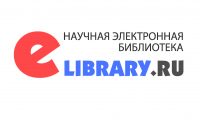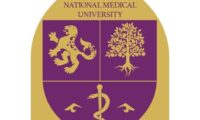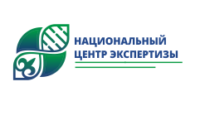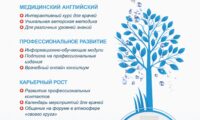Received: 30.10.2023/ Accepted: 28.11.2023/ Published online: 29.12.2023
УДК 616-08-039.71, 616-084
DOI 10.53511/PHARMKAZ.2024.58.58.001
M. BAIBOLOVA 1 , B.A BOLATBEKOV 1,2,4 , K.S. TRUSHEVA 1 , S. KURAMYS 2,3,4 , Z.S BOLATBEKOVA 2 , B. YESENBEKOV 1
1 International Kazakh-Turkish University, Turkestan, Republic of Kazakhstan
2 Clinic CardioMed, Shymkent city, Republic of Kazakhstan
3 Al-Farabi Kazakh National University, Almaty, Republic of Kazakhstan
4 South Kazakhstan Medical Academy, Shymkent, Republic of Kazakhstan
COMPARATIVE EVALUATION OF CARDIOREHABILITATION EXERCISES
AFTER OPEN HEART SURGERY SUMMARY
Resume. Cardiorehabilitation is a well-established treatment model developed worldwide to reduce the burden
of cardiovascular disease. Cardiorehabilitation is a complex method, as it includes many components. As
a result, the nature and quality of cardiac rehabilitation services may vary, which in turn affects the degree
of benefit to the patient. There are 20 Cardiac Rehabilitation component indicators that are always used.
However, whether cardiorehabilitation has been improved to meet these standards is not well characterized.
At the same time, it is necessary to evaluate the performance of exercises performed by patients during
cardiorehabilitation, and the effectiveness of these exercises.
The purpose of the study: to evaluate the performance of exercises during cardiorehabilitation after open
heart surgery and to evaluate their clinical effectiveness.
Methods. Based on the selection criteria for the study, patients were selected who were admitted to the
rehabilitation department of the Сardiomed clinic through the Hospitalization Bureau after open heart surgery.
A total of 104 patients participated in this study. A comprehensive program of cardiorehabilitation at the 2nd
and 3rd stages of rehabilitation in the patients after open heart surgery consists of breathing simulators,
physical exercises, physiotherapy, exercise bike, inhalations, breathing exercises, a treadmill or skis. All
patients receive medical treatment + rehabilitation procedures according to the developed cardiorehabilitation
program. To assess the results of the study, the Borg scale (a widely used quantitative measure of perceived
exertion during physical activity) was measured in points, and exercise duration was measured in minutes.
The 6-minute walk test was used to describe exercise effectiveness and exercise tolerance.
Results. The average age of patients was 51.96±1.13 years, including 65.4% of men and 34.6% of women.
Among comorbidities, 67.3% of patients have arterial hypertension . Coronary artery bypass grafting was
performed on the 42.3% of patients, mammary coronary artery bypass grafting on the 12.5% patients, mitral
valve replacement on the 26.9% patients, aortic valve replacement on the 11.5% patients, mitral aortic
graft on the 4.9% patients and correction of congenital heart defects on the 1.9% patients. As the results
of the study it revealed, that light intensity during physical activity before rehabilitation was less, and high
intensity was greater; after 6 months, exercises were easily performed in more than half of the patients. In
addition, over time, the exercise became easier, and the overall duration increased. According to the results
of the 6-minute walk test, the distance that patients walk has increased, so the result of cardiorehabilitation
treatment is obvious better.
Conclusion: according to the results of the study, the exercises performed during cardiorehabilitation are
easy, voluminous and doable, and the improvement of the 6-minute walk test indicates the effectiveness of
the exercises.
Key words: cardiorehabilitation, exercises, open heart surgery, coronary artery bypass grafting, Borg scale
REFERENCES
1 Abseitova, S, Nursaitova, A, Ahmalieva, A, Akimbaeva, Zh Organizaciya pomoshchi i iskhody ostrogo koronarnogo sindroma po itogam 2015 goda. In
Materialy Respublikanskoj nauchno-prakticheskoj konferencii «Integrirovannaya model’ upravleniya ostrym infarktom miokarda» 2016 (pp. 6–10).
2 Mukanova G, Andosov, D, Ob organizacii pomoshchi pri infarkte miokarda v usloviyah razvitiya ekstrennoj kardiologicheskoj intervencionnoj sluzhby In
Materialy Respublikanskoj nauchno-prakticheskoj konferencii «Integrirovannaya model’ upravleniya ostrym infarktom miokarda» 2016 (pp. 22–23).
3 Pivina, L, Belikhina, T, Markabayeva, A, Zhunussova, T, others. «Medical and social problem of cardiovascular diseases in Kazakhstan». Nauka i
zdravoohranenie 2015(2):50–59.
4 Baibolova, M, Baimaganbetov, A, Zhanabaev, N, Kuramys, S, Bolatbekova, Z, Bolatbekov, B. «Kardioreabilitaciya-vzglyady na faktory riska i primenenie
programm». Vestnik Kazahskogo Nacional’nogo medicinskogo universiteta 2020(1):87–90.
5 Borg, G. «Psychophysical bases of perceived exertion». Medicine and science in sports and exercise 1982; 14(5):377–381.
6 Yasud, M, Songsaengrit, B, others. «Factors affecting distance of 6-minute walk test in post cardiovascular surgery patients after discharge at Queen Sirikit
Heart Center of the Northeast». Srinagarind Medical Journal 2020; 35(6):687–693.
7 Graham, H, Lac, A, Lee, H, Benton, M. «Predicting long-term mortality, morbidity, and survival outcomes following a cardiac event: A cardiac rehabilitation
study». Rehabilitation Process and Outcome 2019; 8:1179572719827610.
8 Ghanbari-Firoozabadi, M, Mirzaei, M, Nasiriani, K, Hemati, M, Entezari, J, Vafaeinasab, M, Grace, S, Jafary, H, Sadrbafghi, S. «Cardiac specialists’ perspectives
on barriers to cardiac rehabilitation referral and participation in a low-resource setting». Rehabilitation process and outcome 2020; 9:1179572720936648.
9 Araujo Pio, C, Chaves, G, Davies, P, Taylor, R, Grace, S. «Interventions to promote patient utilisation of cardiac rehabilitation». Cochrane Database of
Systematic Reviews 2019(2).
10 Ljungqvist, O, Boer, H, Balfour, A, Fawcett, W, Lobo, D, Nelson, G, Scott, M, Wainwright, T, Demartines, N. «Opportunities and challenges for the next phase of enhanced recovery after surgery: a review». JAMA surgery 2021; 156(8):775–784.
11 Escalante-Gonzalbo, A, Ram\’\irez-Graullera, Y, Pasantes, H, Aguilar-Chalé, J, Sánchez-Castillo, G, Escutia-Macedo, X, Briseño-Soriano, T, Franco-Castro,
P, Estrada-Rosales, A, Vázquez-Abundes, S, others. «Safety, feasibility, and acceptability of a new virtual rehabilitation platform: a supervised pilot study».
Rehabilitation Process and Outcome 2021; 10:11795727211033279.
12 Song, F, Zhan, H, Liang, Y, He, X, Guo, L. «Cardiac rehabilitation improved oxygen uptake measured by cardiopulmonary exercise test in patients after aortic
valve surgery». Reviews in Cardiovascular Medicine 2019; 20(1):47–52.
13 Kamarajah, S, Bundred, J, Weblin, J, Tan, B. «Critical appraisal on the impact of preoperative rehabilitation and outcomes after major abdominal and
cardiothoracic surgery: a systematic review and meta-analysis». Surgery 2020; 167(3):540–549.
14 Bloc, S, Alfonsi, P, Belbachir, A, Beaussier, M, Bouvet, L, Campard, S, Campion, S, Cazenave, L, Diemunsch, P, Di Maria, S, others. «Guidelines on
perioperative optimization protocol for the adult patient 2023». Anaesthesia Critical Care & Pain Medicine 2023; 42(4):101264.
количество просмотров / 👁 277


































